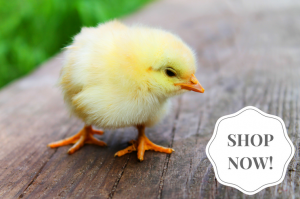
All hens start out laying small eggs. As the birds mature, the egg size increases until it reaches the normal size for the breed. Many breeds will end up laying small or medium size eggs, while most baking recipes call for large eggs. Chicken keepers who do a lot of baking therefore prefer chicken breeds that lay large eggs.
Egg Size
The six distinct egg size designations, ranging from peewee to jumbo, are actually based on an egg’s weight, not its measurements. To find out what size eggs your hens are laying, weigh one or a dozen and compare your result to the following chart. Don’t forget to deduct the weight of the carton or bowl.
| Egg Size | Ounces per Dozen | Ounces per Egg |
| Peewee | Less than 18 | Less than 1.5 |
| Small | 18 | 1.5 |
| Medium | 21 | 1.75 |
| Large | 24 | 2 |
| Extra-Large | 27 | 2.25 |
| Jumbo | 30 | 2.5 |
Brown Egg Layers
Among purebred brown egg layers, some of the largest eggs are produced by Jersey Giants and New Hampshires, both of which can be expected to lay large to extra-large eggs. Other layers of large brown eggs include the Delaware, Plymouth Rock, Rhode Island Red, Rhode Island White, and Sussex.
Hybrid layers are developed specifically for egg production, and therefore typically lay large eggs. They include Black Sex Link, Red Sex Link, Cinnamon Queen, Golden Comet, and Production Reds. If you are raising chickens basically for eggs, these hybrids generally lay better than the pure breeds. But hybrids don’t breed true, so if you wish to perpetuate your own flock by hatching eggs each spring, go with a standard breed.
White Egg Layers
The best purebred layer of white eggs is the Leghorn. Leghorns produce greater numbers of eggs than most other breeds, and their eggs range from large to extra-large.
The Leghorn is not only a prolific layer, but also has a smallish body and therefore is economical to feed. Also eggs with white shells are easy to candle. For these reasons, white eggs long ago became the industry standard.
Leghorns are also used to develop hybrid layers of large white eggs. The Austra White — a cross between Austrolorp and Leghorn — was created as a high producing layer that is somewhat less flighty than the Leghorn. The sex link California White — a cross between California Gray and white Leghorn — can actually surpass the Leghorn in egg production.
Breeds and Strains
Assuming the hens are healthy, properly fed, and raised with minimal stress, the size and number of eggs they lay depends not only on their breed, but also on the specific strain. That’s why you may see different statistics from different sources, depending on the strain that was the point of reference.
And that’s today’s news from the Cackle Coop.
Gail Damerow, author, The Chicken Encyclopedia.


Another site had pee-wee eggs at 15 0unces. It didn’t explain they were talking per dozen. Weird! In the case f Cackle’s specifications on egg size classifications, you don’t specify in the shell or out. I’m curious because I’ve been finding eggs (in the shell) that weigh 3.3 ounces, The hens are surely my second year girls, and I have three breeds plus some crosses between them. So? I’m surprised that my breeds are not listed as “large layers” I have GL Wyandots, Black Australorps, and Light Brahmas. From 19 girls, I’m getting a dozen a day. I have no ideas, unfortunately which breed is laying such a huge egg.